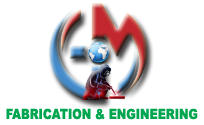Pipe Fabrication involves the manufacturing of straight sections of metallic pipe along with essential piping components such as wrought or forged elbows, tees, reducers, flanges, and the pipe itself. These elements are assembled to form simple or complex piping systems designed to safely transport or process liquids, gases, or solids. A Pipe Fabricator is a skilled professional responsible for fabricating and assembling these pipe systems. They work according to detailed blueprints or product specifications to create customized piping solutions. Pipe fabricators are commonly employed in the construction, manufacturing, and industrial production sectors.
Steel Pipe Fabrication
Pipe fabrication is the process of cutting, beveling, and welding various piping components such as metallic pipes, tees, elbows, flanges, reducers, and more. These components are assembled to create complete piping systems. Pipes can be fabricated from a range of materials including stainless steel, duplex steel, carbon steel, and various other alloys, depending on the application and required durability.
Pipe Work Processes
Fabrication is the process of constructing products by assembling standardized components using one or more manufacturing techniques. For instance, steel fabrication involves creating metal structures through processes such as cutting, bending, and assembling. Piping, on the other hand, refers to the installation of pipes and associated components used to transport fluids, gases, or other materials within a facility or industrial system.
- Cutting
- Punching
- Forming
- Shearing
- Stamping
- Welding
Common fabrication techniques are used to shape, cut, or mold raw metal materials into a finished product. Key responsibilities in the piping fabrication and installation process include:
- Laying out, fabricating, assembling, installing, and maintaining piping systems, pipe supports, and all related components.
- Reading and interpreting blueprints, sketches, and work procedures to ensure accurate execution.
- Inspecting worksites to identify potential obstructions and verifying field dimensions to ensure proper fit and alignment.

